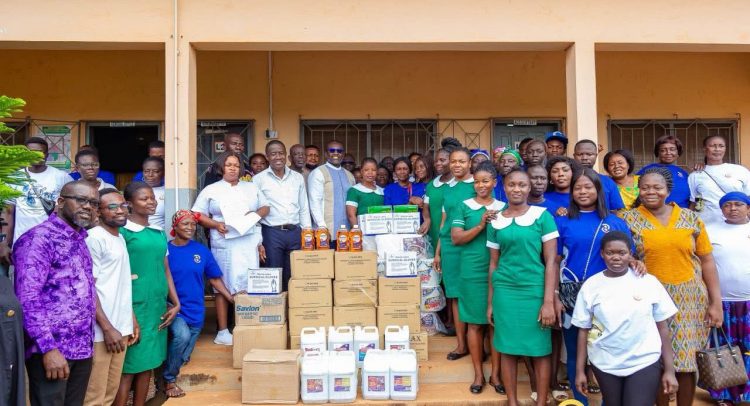
- nominal GDP rises to GH¢321bn
- services, agriculture offset contraction in oil and gas
By Joshua AMLANU & Ebenezer Adjei NJOKU
The economy maintained its expansionary trajectory in second-quarter (Q2) 2025, posting a seasonally adjusted quarter-on-quarter growth rate of 1.4 percent – the highest second-quarter momentum since 2019, according to latest figures released by the Ghana Statistical Service (GSS).
This performance, though marginally below the 1.6 percent growth recorded in the first quarter, occurred despite weakening in the oil and gas sector and highlighted the services and agriculture sectors’ increasing role in sustaining output and balancing industry slowdown.
Government Statistician Dr. Alhassan Iddrisu, in making the announcement, said the quarterly trend demonstrates that the economy is not only expanding year-on-year but also consistently producing more goods and services relative to the preceding quarter.
“Even though the Q2 growth rate of 1.4 percent is lower than the Q1 growth of 1.6 percent, quarter-on-quarter growth is actually the highest since 2019,” he explained.
This comes as the overall economy grew by GH¢63.4billion to reach GH¢321billion in nominal terms versus GH¢258.9billion for the comparable quarter of 2024.
On an annual basis, real gross domestic product (GDP) grew 6.3 percent in the second quarter to hit GH¢47.4billion, compared with 5.7 percent for the same period last year. However, this remained the same compared to the Q1 2025 revised figure of 6.3 percent.
Non-oil GDP growth was even stronger at 7.8 percent – above its 10-year average of 5.5 percent and highlighting the increasing contribution of non-extractive activities to national output.
The services sector (GH¢125.2billion in nominal terms) remained the largest contributor to growth, expanding by 9.9 percent and maintaining its 41.9 percent share of GDP at basic prices.
Information and communication grew by 21.3 percent, contributing 24.1 percent to the overall GDP growth of 6.3 percent. Education, health and finance also recorded strong growth rates, combining with ICT and other services to account for more than half the national expansion.
Agriculture (GH¢74.1billion in nominal terms) consolidated its role as a stabilising sector, growing by 5.2 percent compared with 3.5 percent a year earlier. Crops, which account for 83 percent of agricultural output, rose by 5.6 percent while livestock grew by 5.9 percent. Fishing slowed sharply to 0.9 percent and cocoa expanded by 1.2 percent, reflecting mixed performances across subsectors.
Industry’s (GH¢99.1billion in nominal terms) growth slowed to 2.3 percent – down from 12.2 percent in the same quarter last year, largely due to a contraction of 22.5 percent in oil and gas.
Crude oil output has been on a steady downward trajectory since peaking at 71.44 million barrels in 2019, slipping to 48.25 million barrels by close of 2024 – an average annual contraction of 7.4 percent over five years. The decline deepened in early 2025, when operational setbacks including a 14-day shutdown spanning March and April further constrained production.
Consequently, petroleum revenues fell by 56 percent in first-half 2025 to US$370.6million, a marked reversal from the US$840.8million recorded during the same period a year earlier.
Mining and quarrying declined by 1.8 percent overall even as gold production rose by 19.1 percent.
The yellow metal continues to be a safe haven amid global geopolitical uncertainty, with the global spot price for gold being approximately US$3,675 per ounce on the morning of Wednesday, September 11, 2025.
Electricity generation posted a growth of 6.7 percent, the second highest quarterly rate since first-quarter 2024.
Dr. Iddrisu noted that the positive quarter-on-quarter momentum is an important signal for policymakers and businesses.
“The sustained improvement since early 2024 demonstrates that the economy has regained consistency in its growth profile despite sectoral imbalances,” he noted.
Revisions
The GSS also released revised estimates for previous quarters. First quarter 2025 growth was adjusted upward from 5.3 percent to 6.3 percent following receipt of updated data. Revisions were also made to 2024 figures, with second quarter growth adjusted downward from 7.5 percent to 5.7 percent.
The post Economy sees strongest Q2 growth momentum since 2019 appeared first on The Business & Financial Times.
Read Full Story














Facebook
Twitter
Pinterest
Instagram
Google+
YouTube
LinkedIn
RSS